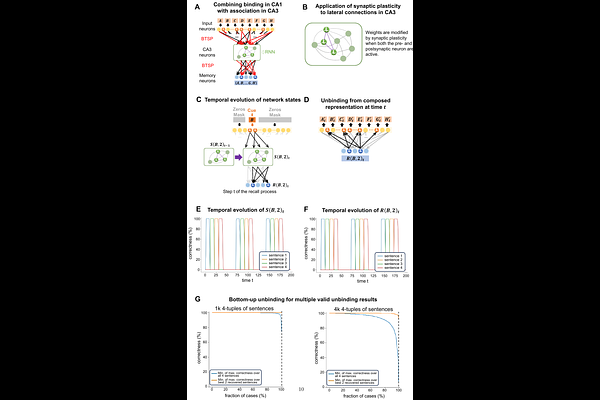Behavioral Time Scale Synaptic Plasticity (BTSP) endows Hyperdimensional Computing with attractor features

Behavioral Time Scale Synaptic Plasticity (BTSP) endows Hyperdimensional Computing with attractor features
Yu, C.; Wu, Y.; Wang, A.; Maass, W.
AbstractHyperdimensional computing (HDC) addresses massively parallel implementations of symbolic computations that are both more transparent than ANNs and LLMs and more suitable for in-memory computing on highly energy-efficient analog hardware. It captures an essential aspects of brain computations: objects, concepts, and their attributes are encoded by very sparse distributed representations. But currently known methods for binding these tokens together suffer from functional deficiencies of the commonly used algebraic methods. We show that a mechanism which the brain employs for binding, Behavioral Time Scale Synaptic Plasticity (BTSP), overcomes these deficiencies by adding attractor features to high-dimensional representations. They drastically improve the capability to recover from composed representations the tokens which have been bound together in them. One arrives in this way at a functionally more powerful HDC paradigm that provides new perspectives both for understanding how brains carry out symbolic computations, and for implementing them in novel energy-efficient and massively parallel neuromorphic hardware.